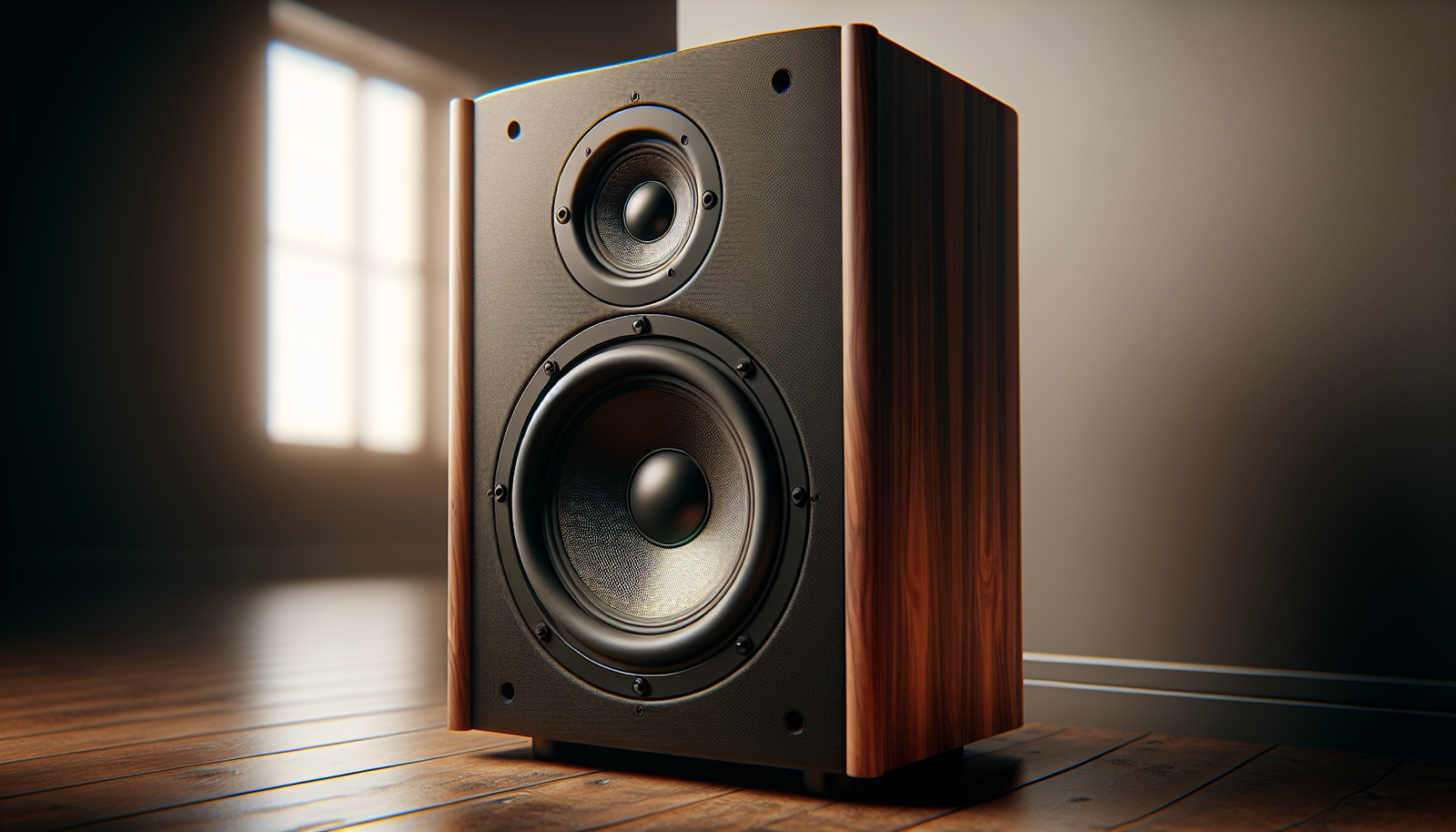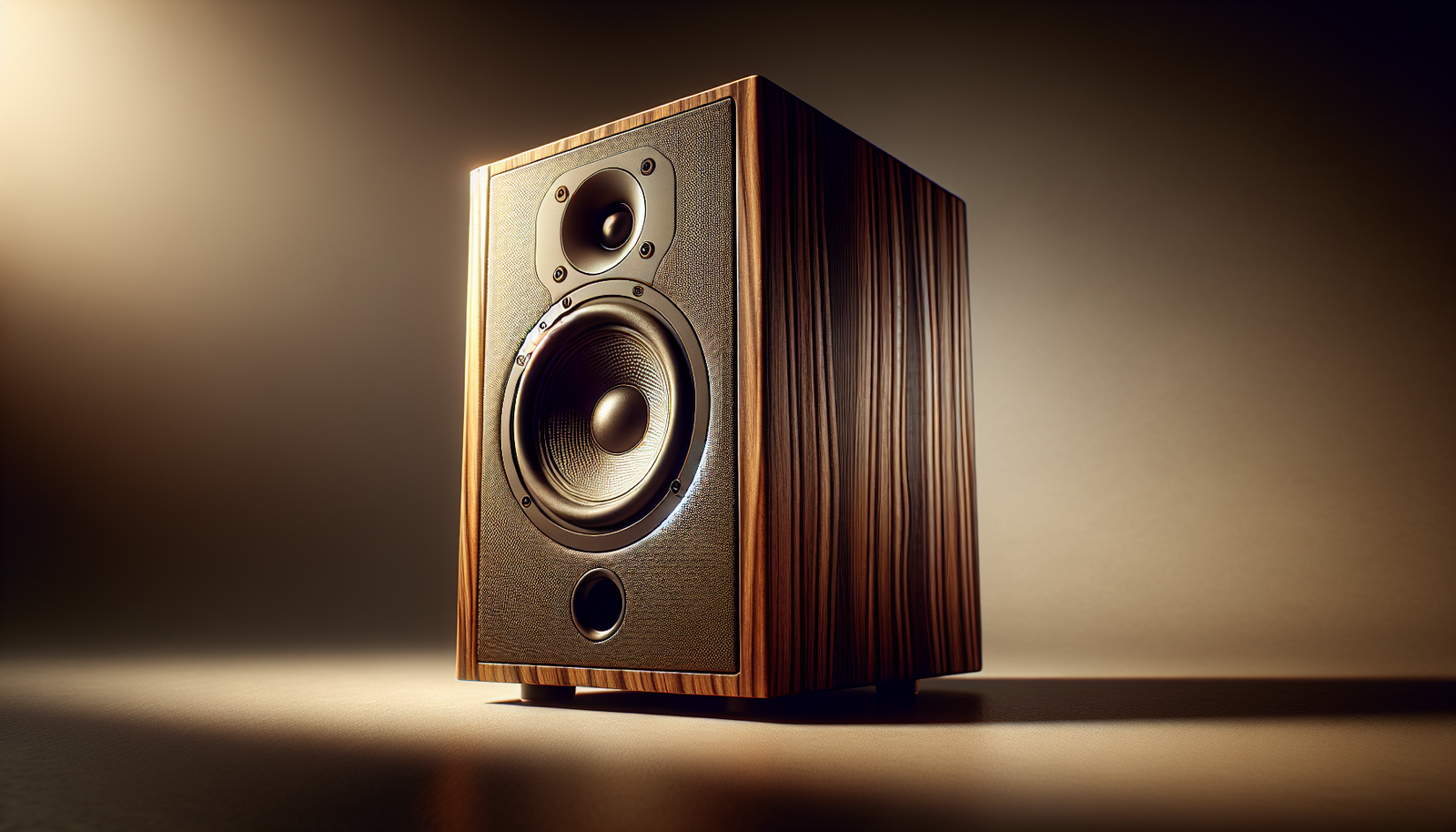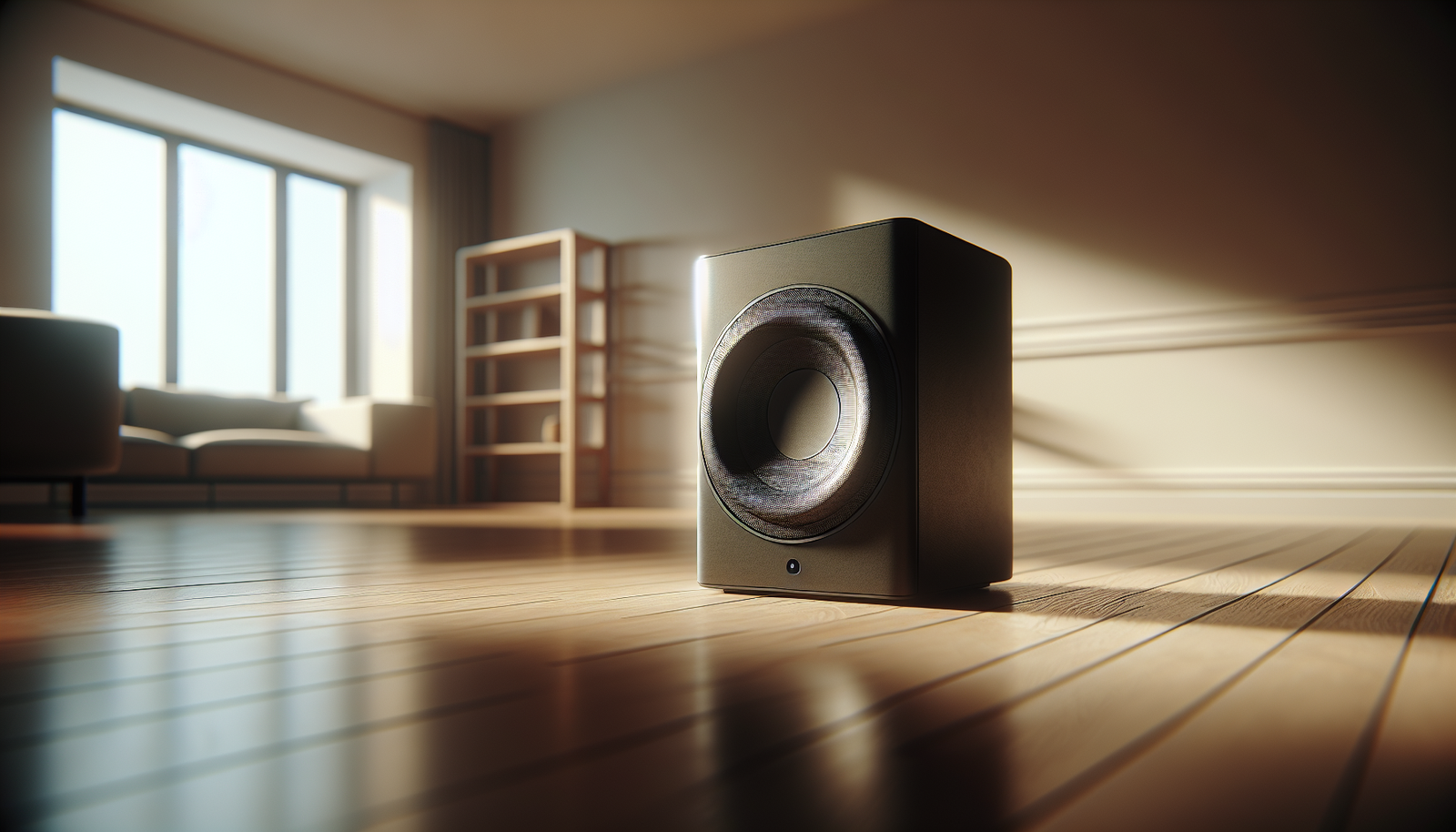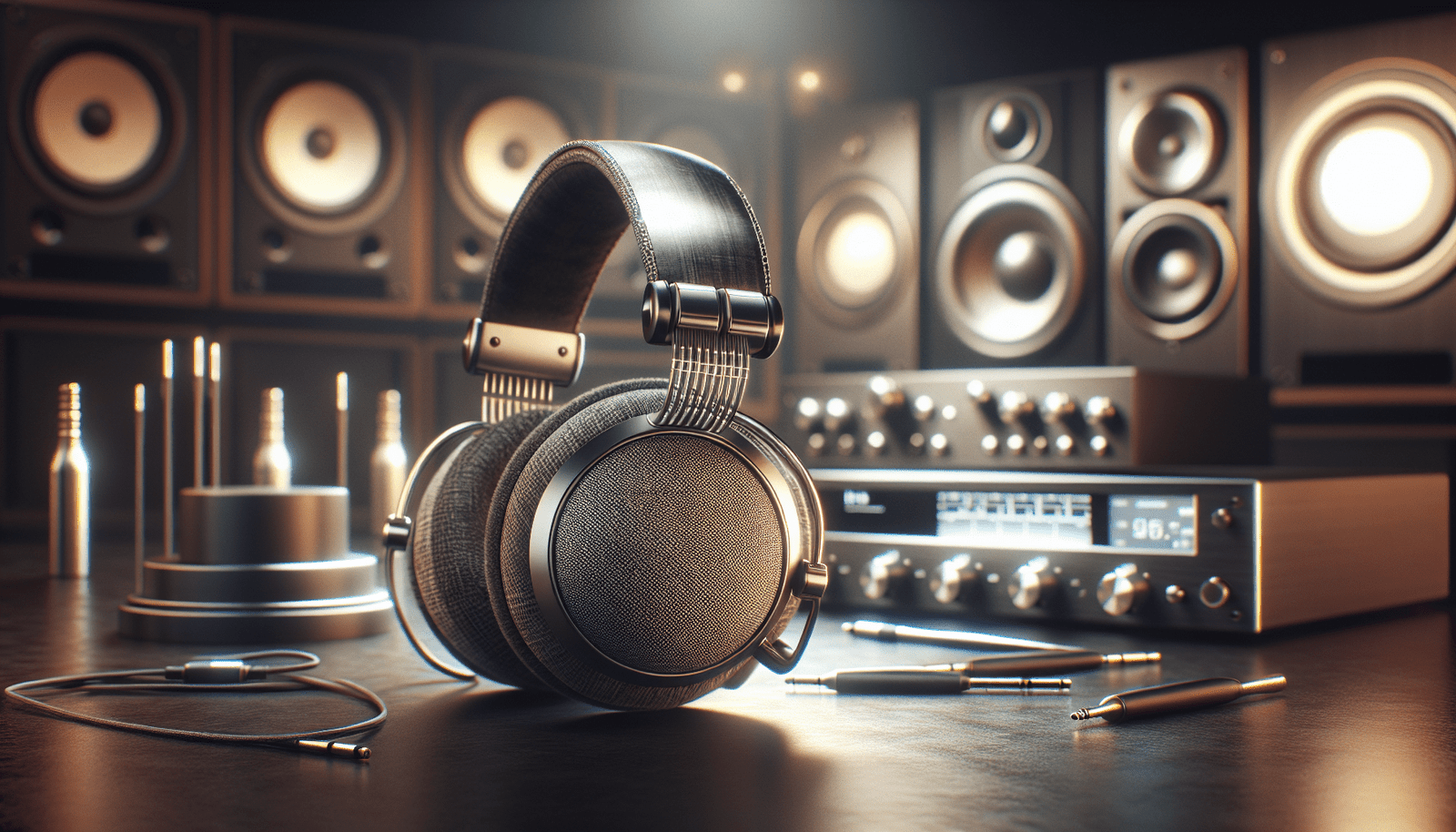Are you trying to pick the right speakers to make your music, movies, or events sound their absolute best?
Ultimate Guide to Sound System Speakers
This guide is written for you to understand sound system speakers from the ground up. You’ll get practical advice on speaker types, specs that matter, setup tips, and buying guidance so you can make confident choices for your space and budget.
Why speakers matter
Your speakers are the final link in the audio chain delivering what you hear. Even the best source or amplifier can be limited by poor speakers, so choosing the right ones directly affects clarity, dynamics, and overall enjoyment. You’ll learn how to match speakers to your goals and room.
Basic speaker anatomy
Understanding how a speaker is built helps you evaluate designs and features. A typical speaker includes drivers (woofers, midrange, tweeters), a crossover network, and an enclosure that influences sound character. When you know what each part does, you can better interpret specs and reviews.
Drivers: what moves the air
Drivers convert electrical signals into sound by moving air. Woofers handle low frequencies, tweeters produce highs, and midrange drivers cover voices and instruments. The driver quality and materials shape tonal accuracy and frequency extension, so consider them closely.
Crossovers: dividing frequencies
Crossovers send the right frequencies to each driver to avoid distortion and improve clarity. They can be passive (in the speaker) or active (in the preamp/processor). A well-designed crossover minimizes overlap and phase issues, producing cleaner sound as a result.
Enclosures: more than a box
The enclosure affects bass response, resonance, and overall tonal balance. Common types are sealed, ported (bass-reflex), transmission line, and horn-loaded. Each design trades off size, efficiency, and low-frequency extension — your room and listening goals will guide the choice.
Types of speakers and common uses
There’s a wide variety of speaker types tailored to different use cases. You’ll want to match the speaker form factor to your listening habits, space, and system.
Bookshelf speakers
Bookshelf speakers are compact and versatile for small to medium rooms. They provide good midrange detail and can be paired with a subwoofer for fuller bass. You’ll get great sound with a modest footprint.
Floorstanding (tower) speakers
Floorstanding speakers have larger enclosures and multiple drivers for extended bass and greater dynamics. They can often handle higher power and fill larger rooms without a sub. If you want powerful, full-range sound, these are a solid option.
In-wall and in-ceiling speakers
Built-in speakers are ideal for a clean aesthetic and distributed home audio. They work well for background music and multi-room systems but may need careful placement and calibration for critical listening. You’ll benefit from professional installation in many cases.
Soundbars
Soundbars are a space-saving solution for TVs and small rooms. Many offer virtual surround processing and integrate subwoofers. They don’t match a dedicated surround or hi-fi system in depth, but they provide improved dialogue clarity and simple setup.
Satellite and subwoofer (2.1/5.1) systems
Small satellites paired with a subwoofer can deliver balanced sound while occupying minimal space. This setup is common in home theater because the sub handles deep bass while satellites manage mids and highs. You’ll save space without sacrificing low-end impact.
Studio monitors
Studio monitors are designed for accuracy rather than coloration, making them great for recording and mixing. They reveal imperfections in recordings and help you make production decisions. If you need neutral sound for work, monitors are the right choice.
PA and pro-audio speakers
PA speakers are built for live sound and large spaces, focusing on projection and durability. They handle high SPLs and are usually more robust than consumer speakers. For live events and venues, this is the category you’ll turn to.
Outdoor speakers
Outdoor speakers are weather-resistant and designed to project over open areas. They prioritize durability and coverage over audiophile-level clarity. You’ll want models rated for exposure if they’ll be outside long-term.
Key specifications and what they mean to you
Speaker specs on a box or website can be confusing. These are the ones you should understand and how they affect performance.
Frequency response
Frequency response indicates the range a speaker can reproduce (e.g., 40 Hz–20 kHz). It doesn’t tell the whole story — flat response matters more than wide range if you want accurate sound. Note where bass rolls off and whether the response is smooth or uneven.
Sensitivity (SPL)
Sensitivity measures how loudly a speaker plays with a given amount of power, usually expressed in dB (e.g., 88 dB @ 1W/1m). Higher sensitivity means you’ll need less amplifier power to reach the same volume. If you have a low-powered amp, seek speakers with higher sensitivity.
Impedance
Impedance (ohms) affects how much load the speaker presents to an amplifier. Most home speakers are 4–8 ohms. Lower impedance can demand more current from your amp; ensure your amplifier can handle the rating. Mismatching can cause clipping or damage.
Power handling and recommended amplifier power
Power handling (RMS/peak) tells what speaker can safely handle. Use an amplifier whose continuous power rating matches or slightly exceeds the speaker’s recommended power range. Underpowering can cause distortion and overdriving can damage drivers.
Total harmonic distortion (THD)
THD measures the distortion introduced by the speaker. Lower THD is better for transparent sound. While not always listed, low THD at typical listening levels is desirable.
Max SPL
Maximum SPL indicates the loudest sound level the speaker can produce without significant distortion. For parties, live sound, or large spaces, higher SPL capability is useful. Remember your room and hearing safety when seeking extreme SPL.
Crossover frequency and slopes
Crossover frequencies indicate the points where the signal is split between drivers. Slope (e.g., 12 dB/octave) affects how sharply frequencies are divided. Proper slopes prevent driver overlap issues and improve coherence.
Cabinet resonance and resonant frequency
Cabinet resonance can color sound; well-braced and damped cabinets minimize this. The resonant frequency of the enclosure interacts with driver response, especially in the low end, affecting perceived tightness and clarity of bass.
Matching speakers to amplifiers and receivers
Matching speakers and amps is crucial for performance and reliability. You’ll want compatible impedance, adequate power, and a similar sonic character if you prefer a particular tonal balance.
Power matching rules
Choose an amplifier with continuous power output that falls within the speaker’s recommended range. If in doubt, choose a slightly higher power amp rather than too little. A more powerful amp used responsibly gives headroom and cleaner dynamics.
Considering amplifier type
Solid-state amplifiers generally provide tight control (damping) and headroom, while tube amps add warmth and harmonic coloration at lower power. Match the amp type to your taste and speaker sensitivity — tube amps pair well with high-sensitivity speakers.
Bi-amping and active crossovers
Bi-amping uses separate amp channels for different drivers, which can reduce intermodulation and improve clarity. Active crossovers require an active preamp or processor but allow greater control and lower distortion. You’ll need proper setup and gear to benefit fully.
Active vs passive speakers
Understanding the difference helps you choose the right system architecture.
Passive speakers
Passive speakers require an external amplifier and include passive crossovers. They offer flexibility in choosing amplification and upgrades. If you like mixing and matching components, passive speakers are a great choice.
Active (powered) speakers
Active speakers have built-in amplifiers and usually active crossovers. They simplify setup and ensure the amp is perfectly matched to the drivers. For studio work and compact systems, active speakers are often more convenient and optimized.
Table: Active vs Passive comparison
| Feature | Active (Powered) | Passive |
|---|---|---|
| Amplifier built-in | Yes | No |
| Ease of setup | High | Moderate |
| Matching flexibility | Low | High |
| Optimal crossover control | High | Depends |
| Upgrade path | Limited (speaker-specific) | Wide (components can be swapped) |
Speaker placement and room interaction
Speakers don’t exist in a vacuum — the room is a major factor. Placement, room treatments, and listening position all affect sound quality.
Stereo listening geometry
For stereo, place speakers at an equilateral triangle with the listening position for the most focused imaging. Toe-in speakers toward the listening position to adjust brightness and stereo width. Height and angle adjustments fine-tune the soundstage.
Subwoofer placement and integration
Subwoofer location greatly impacts bass response. Try the sub in different spots (corner, against a wall, or near the listening position) and use the “sub crawl” method to find the smoothest bass. Use crossover settings and phase control to integrate the sub with satellites.
Room acoustics basics
Hard surfaces cause reflections that blur imaging and exaggerate highs. Bass builds up at certain room modes causing boominess. You’ll improve sound with absorption at first reflection points, bass traps for low-frequency control, and diffusion for a more natural mid/high response.
Treating common problems
If you hear harshness, check early reflections and high-frequency absorption. If bass is uneven, use bass traps and speaker/sub position adjustments. Simple rugs, curtains, and properly placed panels can make a big difference before you invest in expensive solutions.
Wiring, connectors, and speaker cables
Cables affect signal delivery but often not the sound as dramatically as speakers and room. Use proper gauge and connectors for reliability and safety.
Speaker cable gauge
Choose thicker cable (lower AWG number) for long runs or powerful systems. Common recommendations:
- Up to 10 feet: 16–18 AWG
- 10–50 feet: 14 AWG
- Over 50 feet: 12 AWG
Thicker cable reduces resistance and preserves power delivery.
Connectors: banana, spade, bare wire
Banana plugs provide convenience and reliable contact. Spade connectors are excellent for binding post terminals requiring secure mechanical connection. Bare wire works but can fray; ensure correct polarity and solid contact.
Balanced vs unbalanced connections
Balanced connections (XLR, TRS) reduce noise for longer runs, common in studio and PA setups. Unbalanced (RCA, TS) are fine for short runs in consumer setups. Use balanced where cable runs are long or you face interference.
Table: Common connector types
| Connector | Typical use | Pros | Cons |
|---|---|---|---|
| Banana plug | Speaker hook-up | Easy, secure | Needs binding post |
| Spade | Speaker hook-up | Solid contact | Requires screw terminal |
| Bare wire | Speaker hook-up | No extras | Risk of fraying |
| XLR | Pro/studio signals | Balanced, noise rejection | More costly |
| RCA | Consumer audio | Widely available | Unbalanced, susceptible to noise |
Calibration, measurement, and room correction
Calibration refines the system so you hear balanced sound across your room. You can do basic manual adjustments or use measurement tools and DSP for advanced correction.
Manual tuning steps
Start with speaker placement, then set levels by ear and calibrate using a test tone at the listening position. Adjust crossover frequencies and phase to ensure seamless transitions between drivers and subwoofers. Take your time making small adjustments.
Using measurement tools
A measurement microphone (e.g., UMIK-1) and room correction software (REW) allow objective analysis of frequency response and decay. You’ll identify peaks, dips, and modal issues to address with placement or treatments. Measurements speed up achieving accurate sound.
Room correction systems
Many receivers and processors include room correction (e.g., Audyssey, Dirac). These systems can smooth frequency response and correct time alignment. Use them as a helpful starting point, but fine-tune manually if needed for best results.
Matching speakers to music and use case
Different music and use cases benefit from different speaker characteristics. Match your choice to what you listen to most.
For critical music listening
Prioritize speakers with neutral frequency response and low distortion so recordings translate accurately. Studio monitors or high-quality bookshelf/floorstanding speakers are good choices. Pair them with accurate amplifiers and a treated room.
For home theater and movies
Look for speakers with dynamic range, clear dialogue, and a powerful subwoofer for impact. Center channels should excel at voice clarity, while surrounds and height speakers add immersion. Consider AV receivers with room correction and surround processing.
For parties and large spaces
Choose speakers with high sensitivity and high SPL capability, and consider powered PA speakers for portability and robustness. Bass extension and projection are important, and subwoofers should be able to handle heavy low frequencies without strain.
For bedrooms and small apartments
Smaller bookshelf speakers or soundbars with a compact subwoofer can offer satisfying performance without dominating space. Mind neighbors with volume and use efficient speakers if you have a low-powered amp or integrated solution.
Subwoofers and bass management
Bass is felt as much as heard, and it’s often the most challenging part to get right. You’ll learn how to choose and integrate a subwoofer effectively.
Types of subwoofers
Sealed subs provide tight, accurate bass; ported subs extend lower with more output but can be boomier; bandpass subs offer punch but risk colorations. Your room size and preference for tightness vs sheer output guide the type you choose.
Crossover, phase, and level settings
Set the subwoofer crossover generally 10–15 Hz above your main speakers’ low-frequency cutoff, and adjust level so the sub blends without being localized. Phase control helps align the sub with mains — experiment with settings or use a measurement mic to check for nulls and peaks.
Multiple subwoofers
Using two or more subs evens bass response and reduces room mode problems. Place subs symmetrically and use measurement tools or listening tests to refine placement and levels. Multiple subs are especially helpful in home theaters for smooth bass.
Speaker maintenance and longevity
Taking care of your speakers preserves performance and avoids costly repairs. Regular checks and proper handling go a long way.
Cleaning and dusting
Dust grilles and cabinets gently with a soft cloth or vacuum with a brush attachment. Avoid cleaning drivers directly; use compressed air sparingly. Keep cabinets away from prolonged direct sunlight to avoid finish and material degradation.
Protecting from moisture and heat
Speakers aren’t typically designed for wet environments. Keep them in dry, temperature-controlled spaces. Outdoor or bathroom installations require purpose-built weatherproof models.
Handling and transport
When moving speakers, support them properly and avoid dropping or stressing the drivers. Remove grilles and strap pads securely if transporting long distances. For pro systems, use cases and padding reduce wear.
Buying tips and checklist
Use a methodical approach when choosing speakers to avoid buyer’s remorse. Focus on listening, compatibility, and practical concerns.
Steps to take before buying
- Define your main use (music, movies, studio, PA).
- Measure room size and consider placement constraints.
- Set a realistic budget for speakers and any needed amplification or subwoofers.
- Read reviews but prioritize listening tests with familiar tracks.
- Check return policies and warranty terms.
What to evaluate during listening tests
Bring your own music and listen for tonal balance, imaging, bass control, and dynamic headroom. Try different volumes and test with complex material. If possible, listen at the position you’ll typically use to judge performance accurately.
Table: Budget tiers and expectations
| Budget | Typical options | What to expect |
|---|---|---|
| Entry-level ( |



